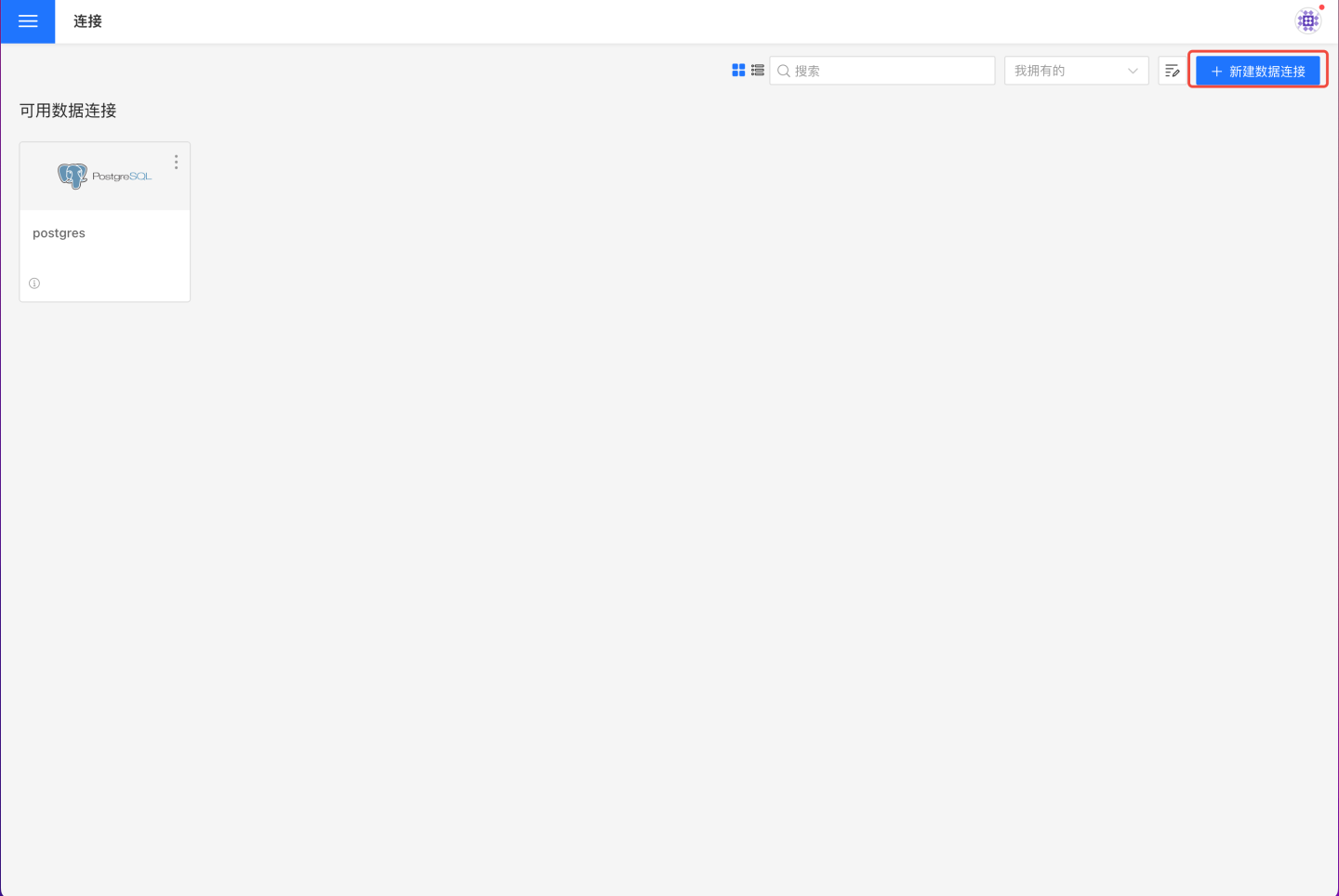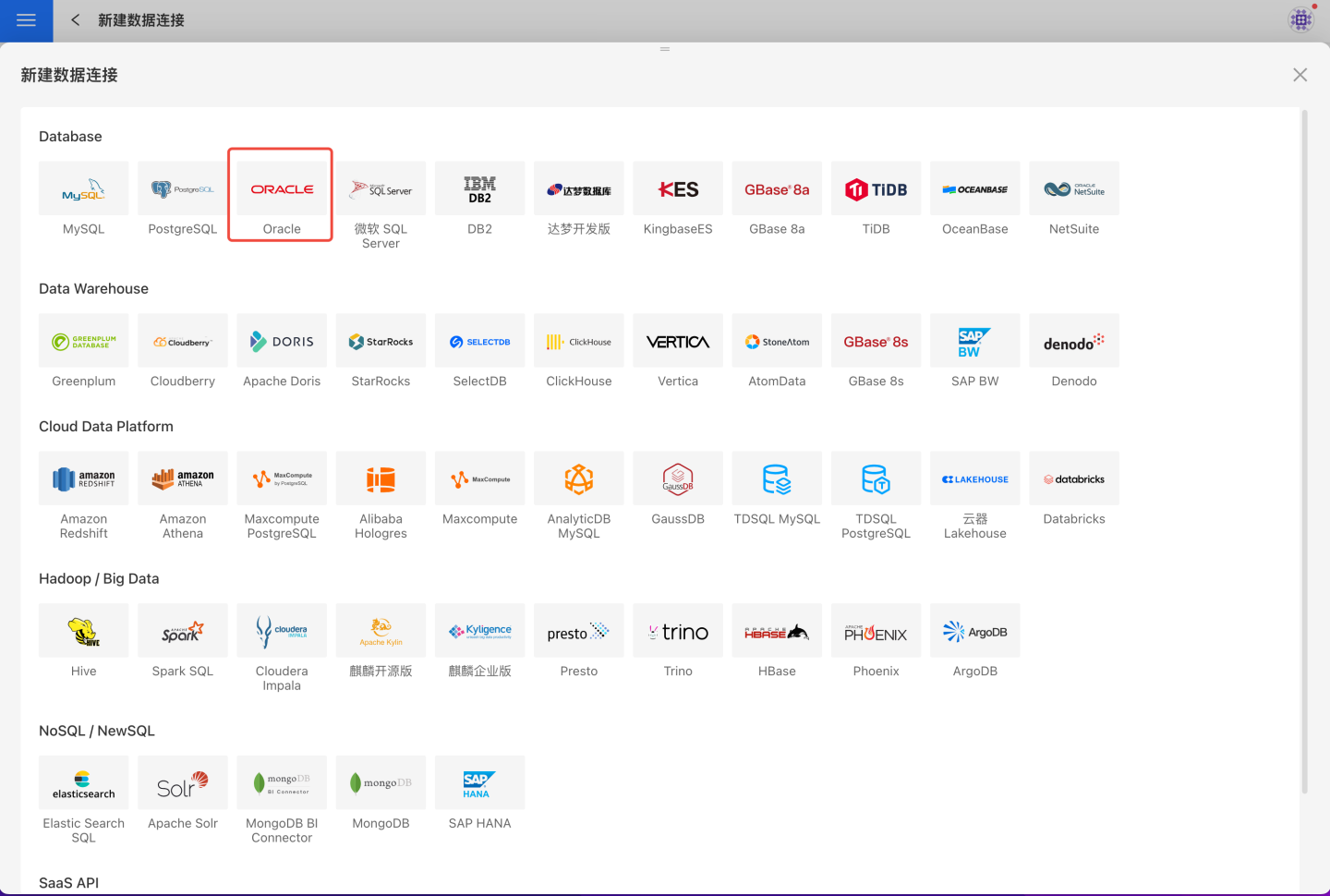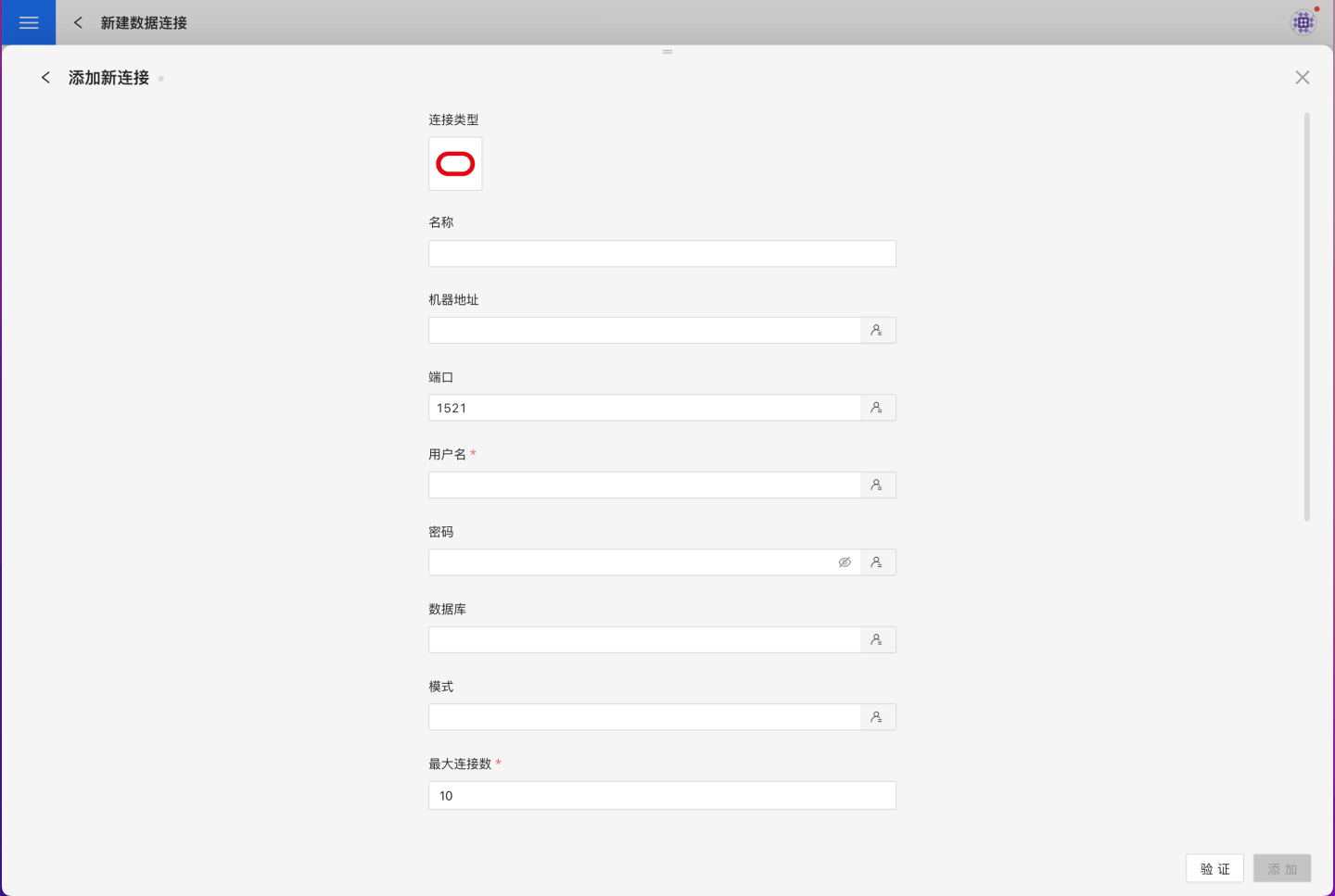Connecting to Oracle
Operation Steps
Please follow the steps below to connect to the Oracle data source.
Click "New Data Connection" in the upper right corner of the data connection page.

Select the
Oracledata source from the list of data source types.
Fill in the required parameters for the data source connection as prompted.

Connection Configuration Information Description
Field Description Name The name of the connection. Required and unique within the user. Host Address The address of the database. If the URL field is filled, the value in the URL takes priority. Port The port of the database. If the URL field is filled, the value in the URL takes priority. Username The username for the database. Password The password for the database. Database The name of the database. Schema The schema of the database. Max Connections The maximum number of connections in the connection pool. Prefer using database comment as dataset title Choose whether to display the table name or the table comment as the title. When enabled, the title is shown; when disabled, the table comment is shown. URL The JDBC URL of the database. Transaction isolation level for read operations This setting only affects reading data; writing data still uses the default isolation level. Hierarchical loading of schema and tables Default is off. When enabled, schema and tables are loaded hierarchically. Only schemas are loaded during connection; you need to click the schema to load the tables under it. Query timeout (seconds) Default is 600. For large data volumes, you can increase the timeout as needed. Allow write operations Indicates that this connection can be selected as an output connection in Data Integration and Batch Sync. You must have write permission to the database and pass verification before configuring this parameter. Support uploading files to a specified path Indicates the database name where tables generated when creating a local file dataset are stored. You must have write permission to the database and pass verification before configuring this parameter. Show only tables under the specified database/schema When this option is selected and the database field is not empty, only tables under this database will be displayed. After filling in the parameters, click the
Validatebutton to get the validation result (this checks the connectivity between HENGSHI SENSE and the configured data connection; you cannot add the connection if validation fails).After validation passes,
Allow write operationsandSupport uploading files to a specified pathwill be enabled and can be optionally turned on.Click
Execute Preset Codeto pop up the preset code for this data source, then click the execute button.Click the
Addbutton to add theOracleconnection.
Please note
- Parameters marked with * are required; others are optional.
- You must execute the preset code when connecting to the data source. Failure to do so may result in certain functions being unavailable during data analysis. In addition, when upgrading from a version prior to 4.4 to 4.4, you need to execute the preset code for existing data connections in the system.
Supported Oracle Versions
10g, 11.2.x, 12.1.x, 12.2.x
Data Connection Preview Support
Supports all tables with read permissions.
Please note
- HENGSHI SENSE will filter out tables belonging to system users. Tables that need to be connected should not be placed under system user names.
- System users include
OUTLN,CTXSYS,SYSTEM,RDSADMIN,DBSNMP,GSMADMIN_INTERNAL,XDB,APPQOSSYS,SYS,MDSYS,OLAPSYS,ORDDATA,ORDSYS,WMSYS,LBACSYS,DVSYS,AUDSYS,OJVMSYS,FLOWS_FILES, and users whose names start withAPEX_.
SQL Dataset Support for SQL
All SELECT-related features are supported, and SELECT SQL statements must comply with Oracle syntax specifications.
Supported Authentication Methods
Direct connection using username and password is supported; Proxy Authentication is not supported.
Unsupported Field Types
The following column types in Oracle cannot be processed correctly:
- BINARY_FLOAT
- BINARY_DOUBLE
- BFILE
- XMLType
- UriType
- Object
- user-defined datatypes